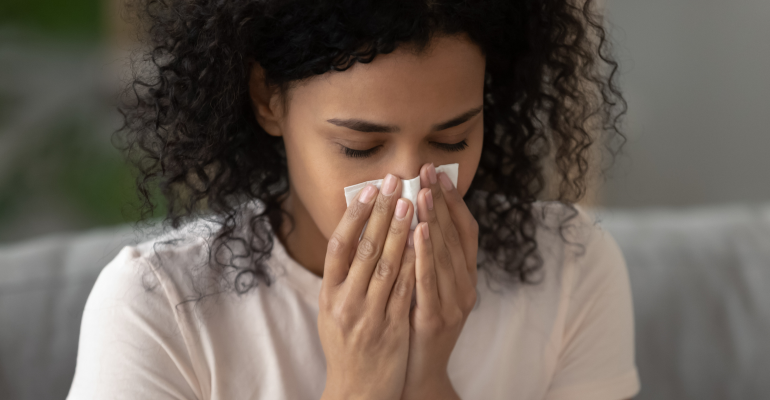Environmental risks carry a significant impact on human health, either through direct exposure to harmful agents or indirectly by altering life-sustaining ecosystems. According to the World Health Organization (WHO), 13 million fatalities are caused by avoidable environmental factors each year. The research also estimates that environmental factors account for 24 per cent of the global illness burden (healthy life years lost) and 23 per cent of all fatalities (premature mortality), with the environmental burden of diseases being 15 times greater in poor nations than in industrialised ones due to variations in exposure to environmental dangers and access to health care.
There has been a large global increase in allergy incidence in recent decades, which has been linked mostly to changes in the environment and lifestyle. Sandstorms transport different types of dust and biological particles across continents. Primary pollutants are directly discharged into the atmosphere, whereas secondary pollutants are produced through chemical interactions with other pollutants in the environment.
Immune systems caught in a storm
Sandstorms help dust-associated biological particles disperse across large distances. In a sandstorm, microbiological organisms survive because many bacteria and fungi can create spores, which help them survive. Bacteria, fungi, and virus-like particles can be found in sandstorm dust. These microorganisms are most likely to survive even during trans-oceanic travel in a dust event, and the bacteria can cause illness even after being carried thousands of kilometres. Microbes, pollen, and dust particles finally fall to the earth after varying durations and distances travelled.
The Middle East and North Africa (MENA) is one of the world's dustiest regions because of its proximity to the Sahara Desert. While natural sources such as the Sahara are the primary causes of dust storms in the Middle East and North Africa, land-use changes and human-induced climate change have contributed to anthropogenic sources as well. Sand and dust storms can be caused by both natural and manmade factors, such as wind speed and land management.
Dust pollution causes a wide range of health consequences, including the development and aggravation of asthma, bronchitis, respiratory disorders, infections, and lung cancer. The dust has a detrimental effect on the environment, agriculture, transportation, and infrastructure, in addition to being harmful to one's health. Dust-related welfare losses are estimated to be worth US$3.6 trillion globally, with expenses in the Middle East and North Africa (MENA) totalling over US$150 and accounting for over 2.5 per cent of GDP on average.

Key measures for prevention
Governments all around the world are developing strategies to reduce the impact of sand and dust storms at both the national and regional levels, in addition to investing in early warning systems.
The World Meteorological Organization (WMO) has established a sand and dust storm warning system that will use a global network of research organisations to provide trustworthy dust storm forecasts. Through an international partnership of research and operational organisations, it aims to make it easier for countries to give users quick and accurate information about sand and dust storms.
Dr. Julio Gomez-Seco, is the Lead Consultant Pulmonologist and Sleep Respiratory Disorders specialist at Fakeeh University Hospital, in light of the recent Air Quality index and climate changes in Dubai, residents struggled with respiratory issues. “Huge storms that hit Dubai recently even blanketed the Burj Khalifa beneath them. The suspended dust particles have started to range from the normal range of 50-70 parts per million (ppm) to 300-500 ppm or even 900 ppm in worse conditions. With visibility limited to just a few metres, it is time to take precautionary measures to stay protected from the sandstorms,” he explained.
How to safeguard one’s health
“Sandstorms or dust storms are a cause of concern for citizens’ health in and around Dubai. In the aftermath of the storms, the Air Quality Index soars into the ‘hazardous’ stretch. There is a serious threat to people suffering from respiratory problems like dust allergies and breathing issues like asthma. It can also worsen the health of people with chronic conditions like obstructive pulmonary diseases. Deposit of sand in the lungs causes Silicosis, which may cause lung fibrosis and scarring. Other aftereffects are irritation of eyes — itching, burning, conjunctivitis, throat irritation, nose blockage due to excess mucus caused by bacteria, virus, and fungal spores in the suspended sand particles in the air. Skin irritation and infection/inflammation. This can be particularly harmful to cardiac patients or vulnerable populations for cardiovascular diseases,” he said.
The lead Pulmonologist advises staying indoors as much as possible, especially for those who fall into vulnerable groups. “Infants, school children, senior citizens, people with pre-existing conditions like asthma or upper respiratory tract problems and those who have co-morbidities are at risk. It is advisable to remain in air-conditioned spaces; clean your AC vents regularly, stay hydrated and if stepping out, wear a N-95 mask and cover your eyes, nose and ears. Check the weather forecast before venturing outdoors. Consult a pulmonologist for additional precautions, especially if you are co-morbid or have pre-existing respiratory issues. Visit a doctor immediately if any of your symptoms persist or if your pre-existing condition worsens. It is always better to be safe than sorry.”

